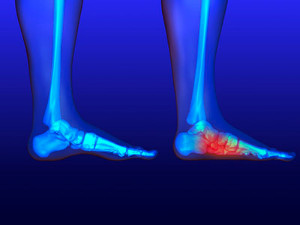
The medical condition known as flat feet exists as a result of little or no arch in the foot. It is easy to notice and can be seen by standing on the floor with the entire foot lying flat. It can be referred to as pes planus, or fallen arches, and most babies are born with this condition. It generally disappears as most arches are fully developed by the teenage years. There is a small percentage of patients who have flat feet throughout adulthood that may induce pain and discomfort. There are various types, and flexible flat feet are the most common. It is evident when the arch is visible as the foot is lifted. Additionally, a tight Achilles tendon may be a source of flat feet and often affects the arch. The heel can lift sooner than it should while walking and running, and it can cause pain and discomfort. If a foot injury occurs and the tendon that connects the inside of the ankle to the calf muscle becomes swollen or torn, the arch can be affected, possibly resulting in flat feet. If you have this condition, it is suggested that you are under the care of a podiatrist who can prescribe custom-made orthotics, which may help to strengthen the area where the arch normally is.
Flatfoot is a condition many people suffer from. If you have flat feet, contact Emmanuel Bustos, DPM from New York. Our doctor will treat your foot and ankle needs.
What Are Flat Feet?
Flatfoot is a condition in which the arch of the foot is depressed and the sole of the foot is almost completely in contact with the ground. About 20-30% of the population generally has flat feet because their arches never formed during growth.
Conditions & Problems:
Having flat feet makes it difficult to run or walk because of the stress placed on the ankles.
Alignment – The general alignment of your legs can be disrupted, because the ankles move inward which can cause major discomfort.
Knees – If you have complications with your knees, flat feet can be a contributor to arthritis in that area.
Symptoms
- Pain around the heel or arch area
- Trouble standing on the tip toe
- Swelling around the inside of the ankle
- Flat look to one or both feet
- Having your shoes feel uneven when worn
Treatment
If you are experiencing pain and stress on the foot you may weaken the posterior tibial tendon, which runs around the inside of the ankle.
If you have any questions please feel free to contact our office located in New York, NY . We offer the newest diagnostic and treatment technologies for all your foot and ankle needs.